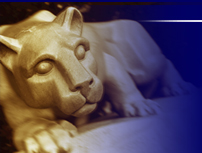A Historical Perspective of Theories in Crime and Delinquency
The historical timeline below attempts to capture the evolution of ideas about crime and punishment as pointed out by your text for this course. Become familiar with this early history and you will see that as time advanced, humans began to move away from the inquisitorial system of justice where people were guilty until they proved themselves innocent and toward the adversarial system of justice where people were innocent until they were proven guilty. The religious leaders in the Middle Ages and up through the 18th century had a strong hold on individual belief systems. If people behaved inappropriately, it was thought such behavior was caused by an evil spirit. Conversely, if people were innocent, it was believed that God would protect and save them.
Early philosophers in the 16th and early 17th centuries such as Hobbes and Descartes challenged the thinking of the religious leaders of the day. They believed that only that which could be observed could be known. In other words, only through direct observation of humans in their natural environments could we understand human behavior. Hobbes believed that humans, left to their own devices, would not always behave appropriately, and called for the need of a civil government in the form of a social contract. Descartes, sometimes referred to as the father of philosophy, was adamant about understanding any phenomenon only through careful observations. This would go against using spiritual or not of this world explanations.
We will talk more about the ushering in of the adversarial system of justice sometime in the early 1700s and by way of Cesare Beccaria (Italian philosopher) in his writing of On Crime and Punishment in 1764 in our later discussions of classical criminology. For now, just know that this was the beginning of the modern-day criminal justice system and a time that called for the end of torture, trials by ordeal, etc. A new system of justice was advocated by Beccaria and his followers; a system where people were innocent until the government proved them guilty.

Figure 1.1: The Evoluation of Ideas about Crime and Punishment
